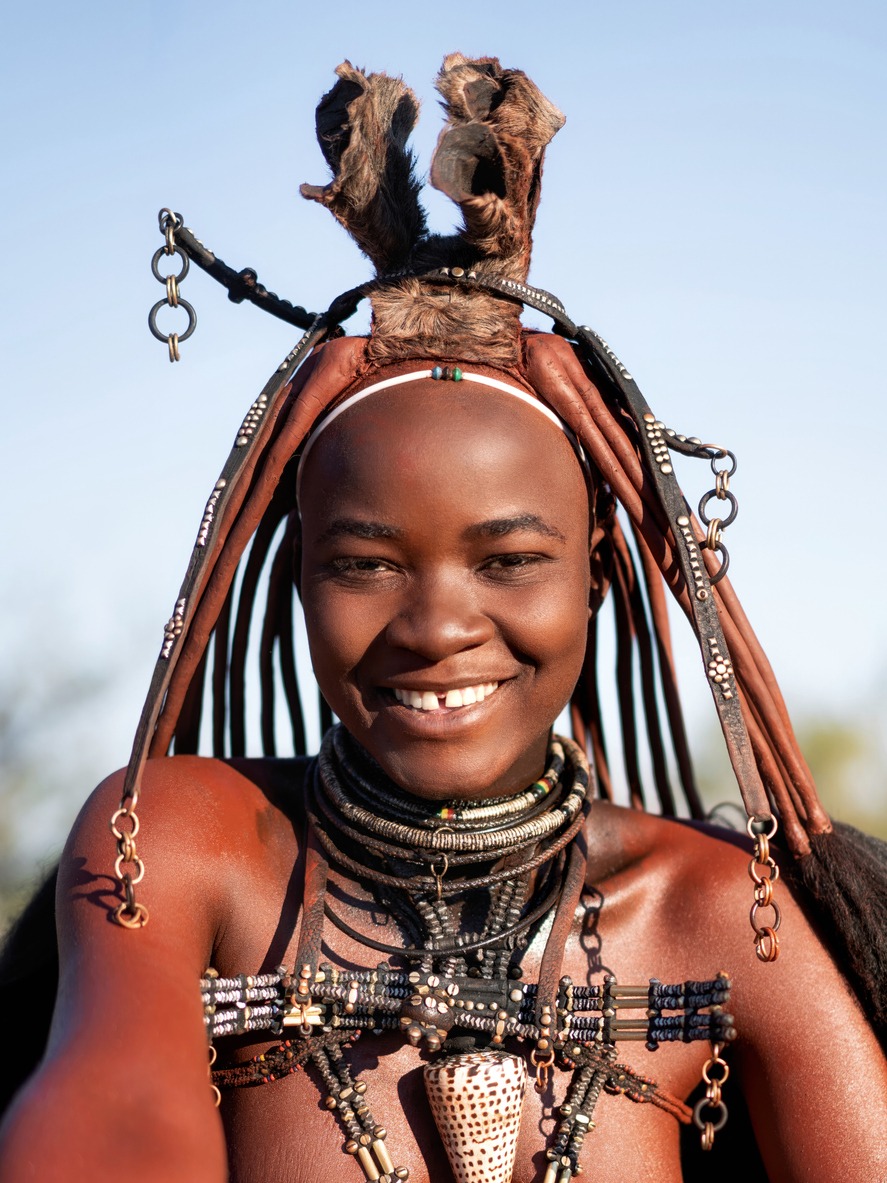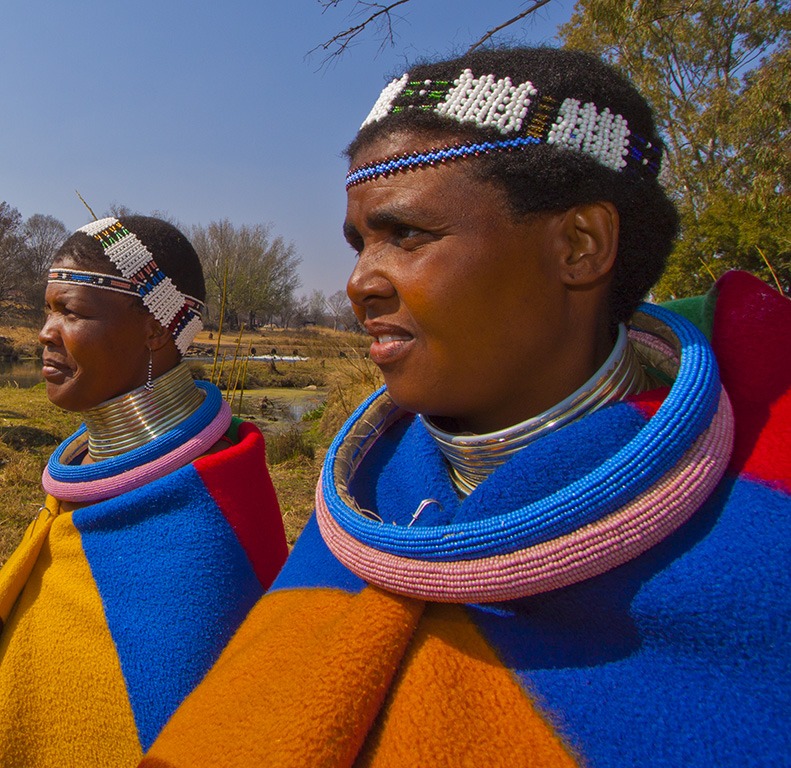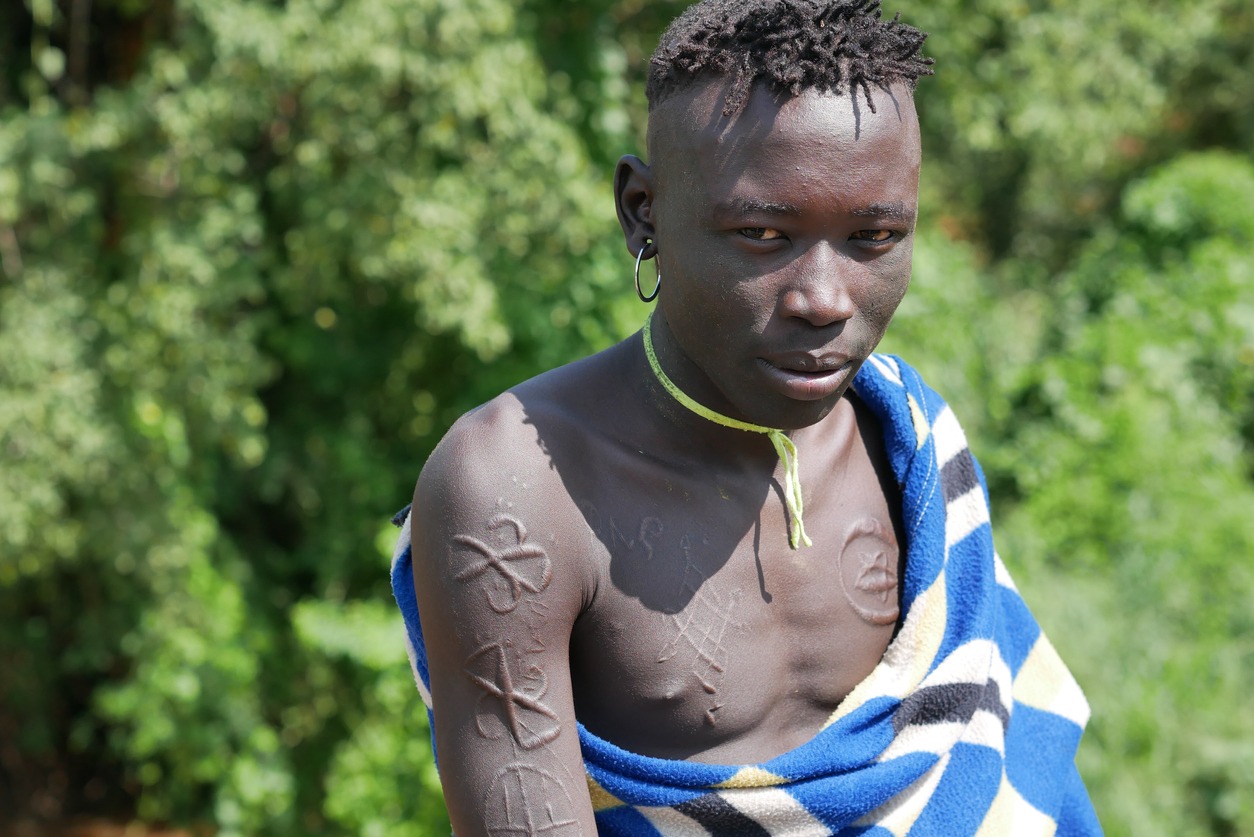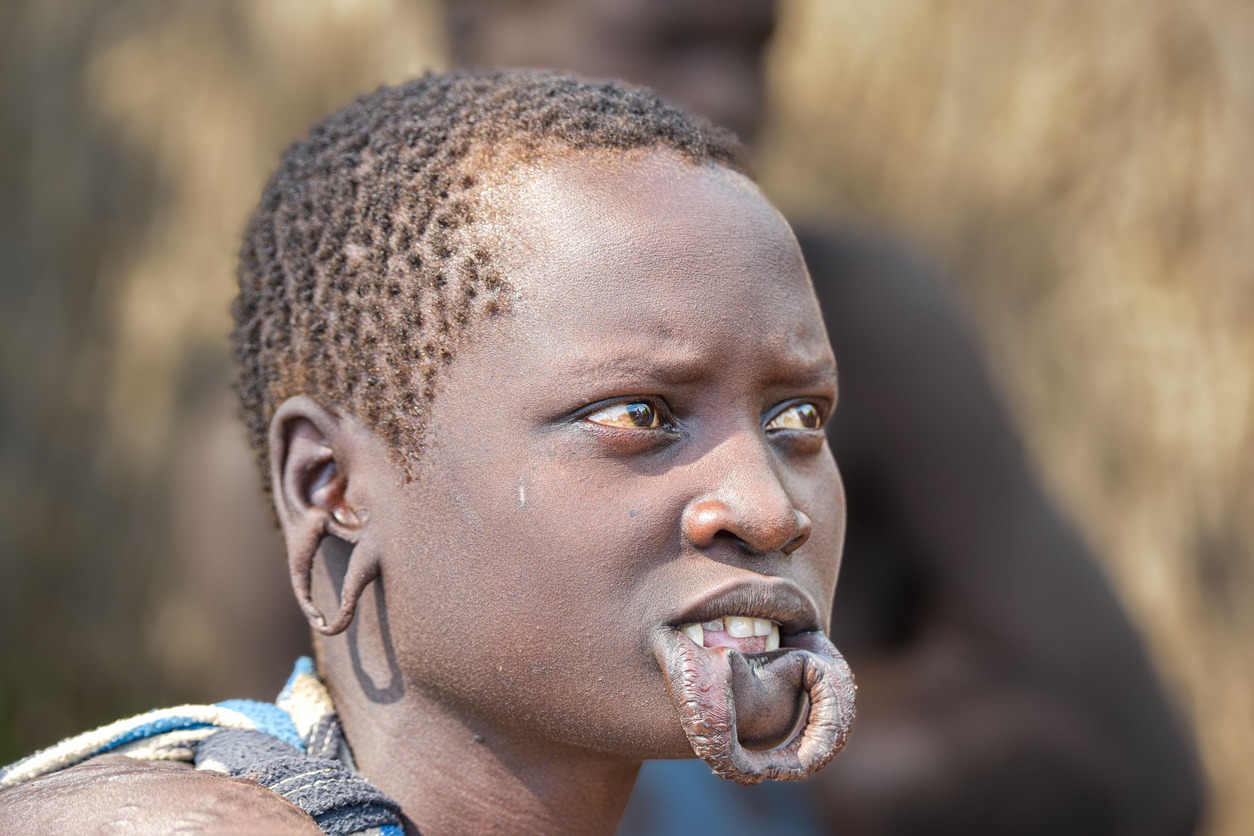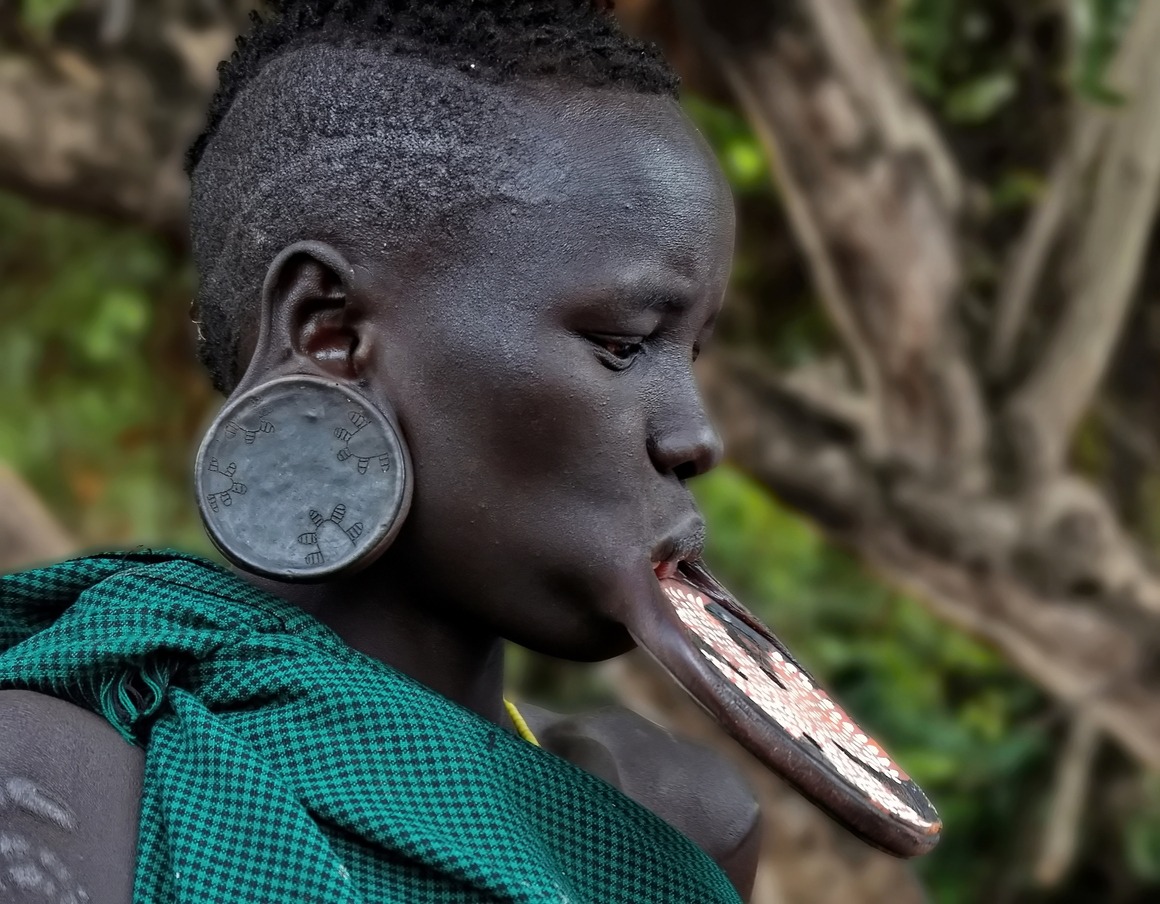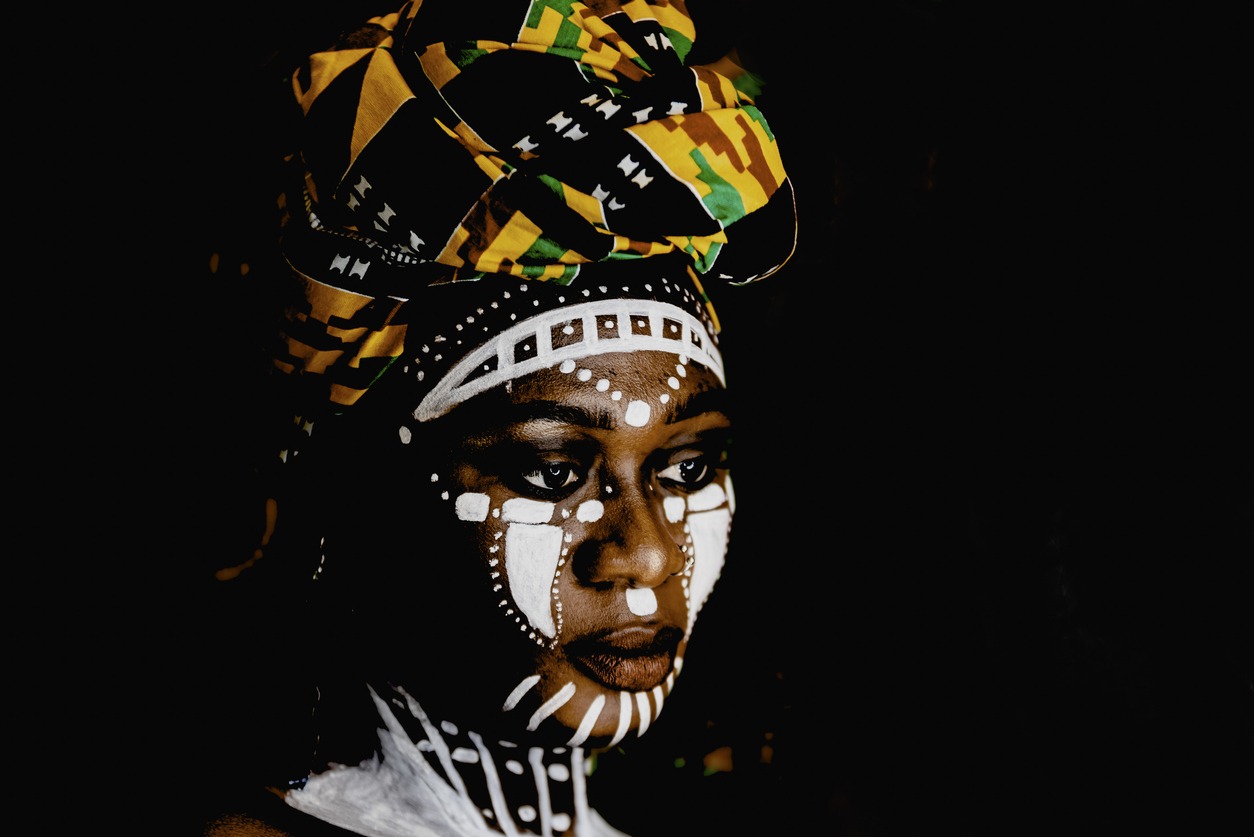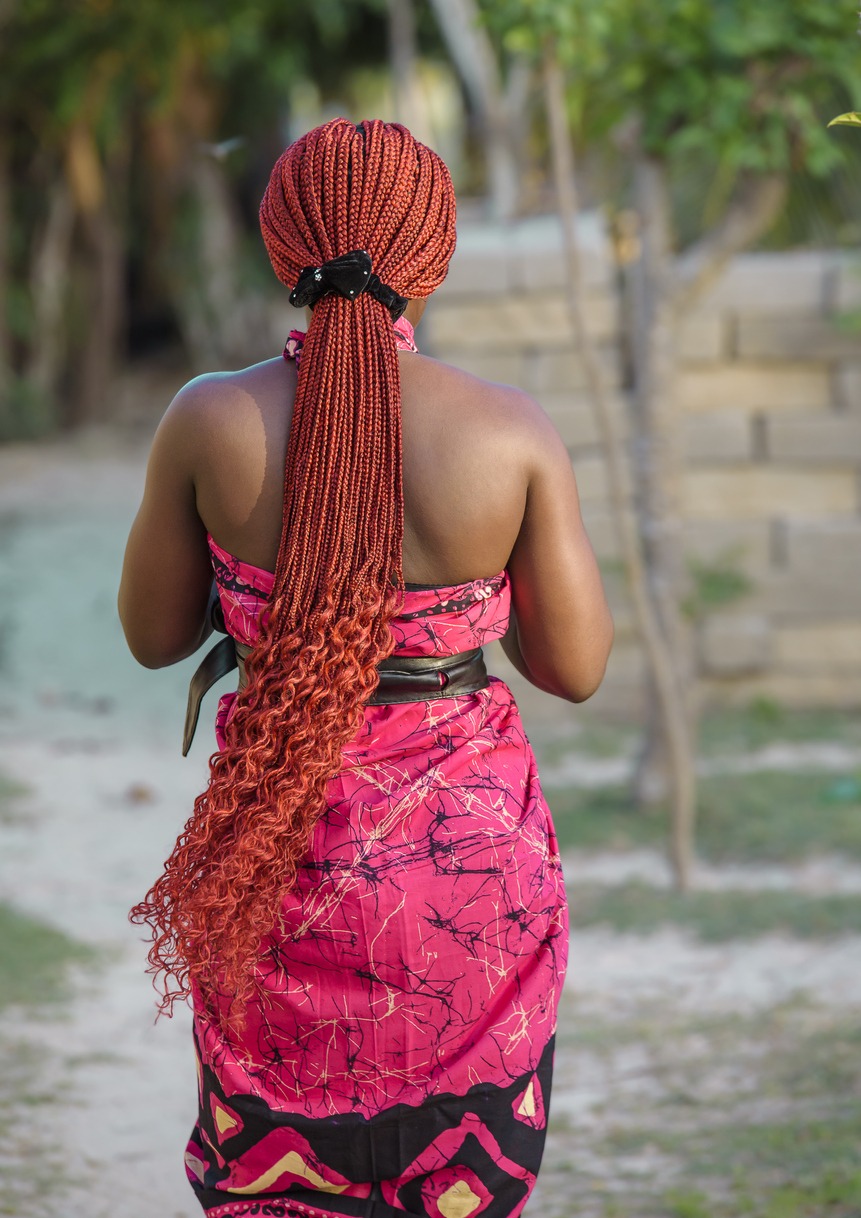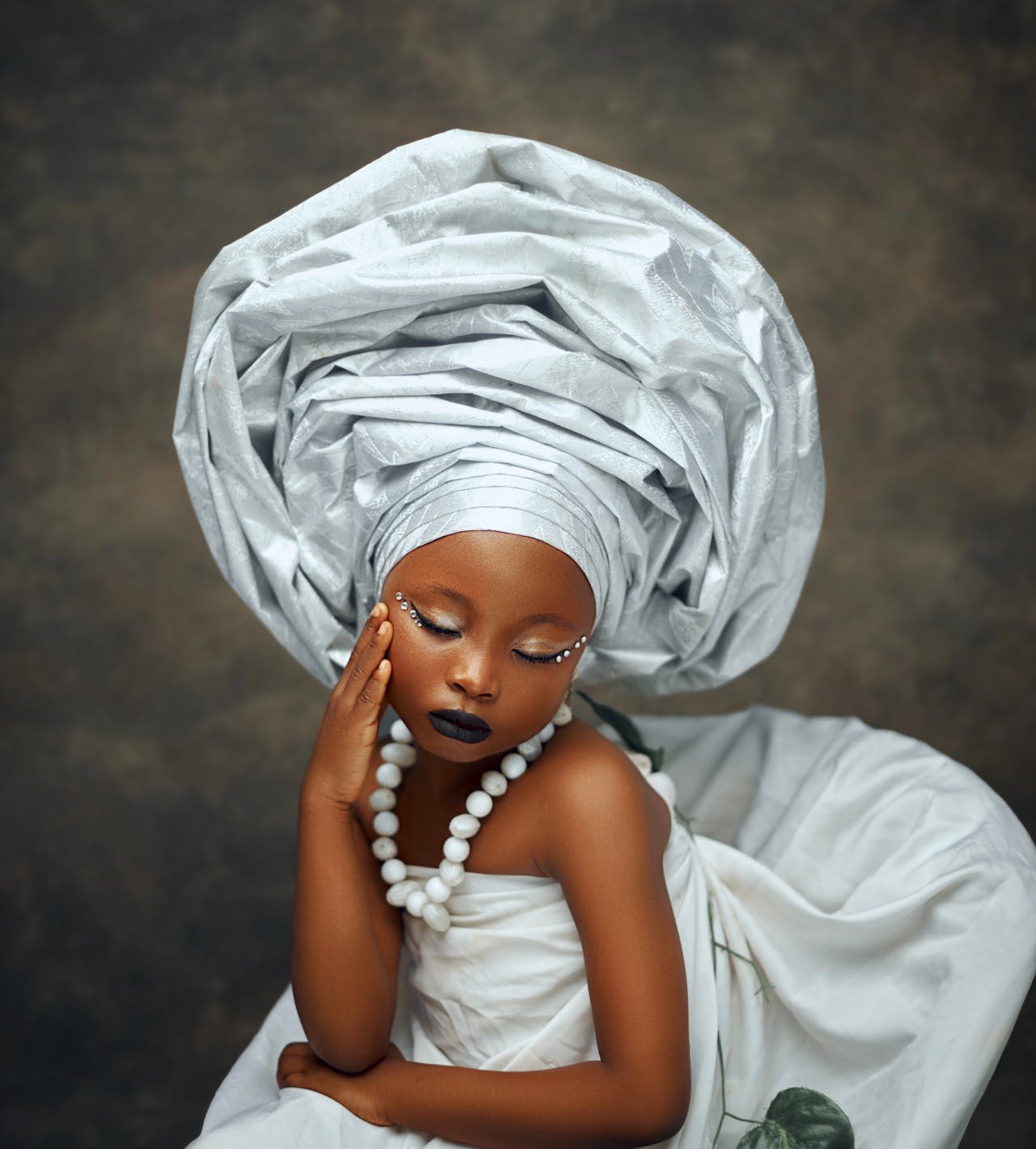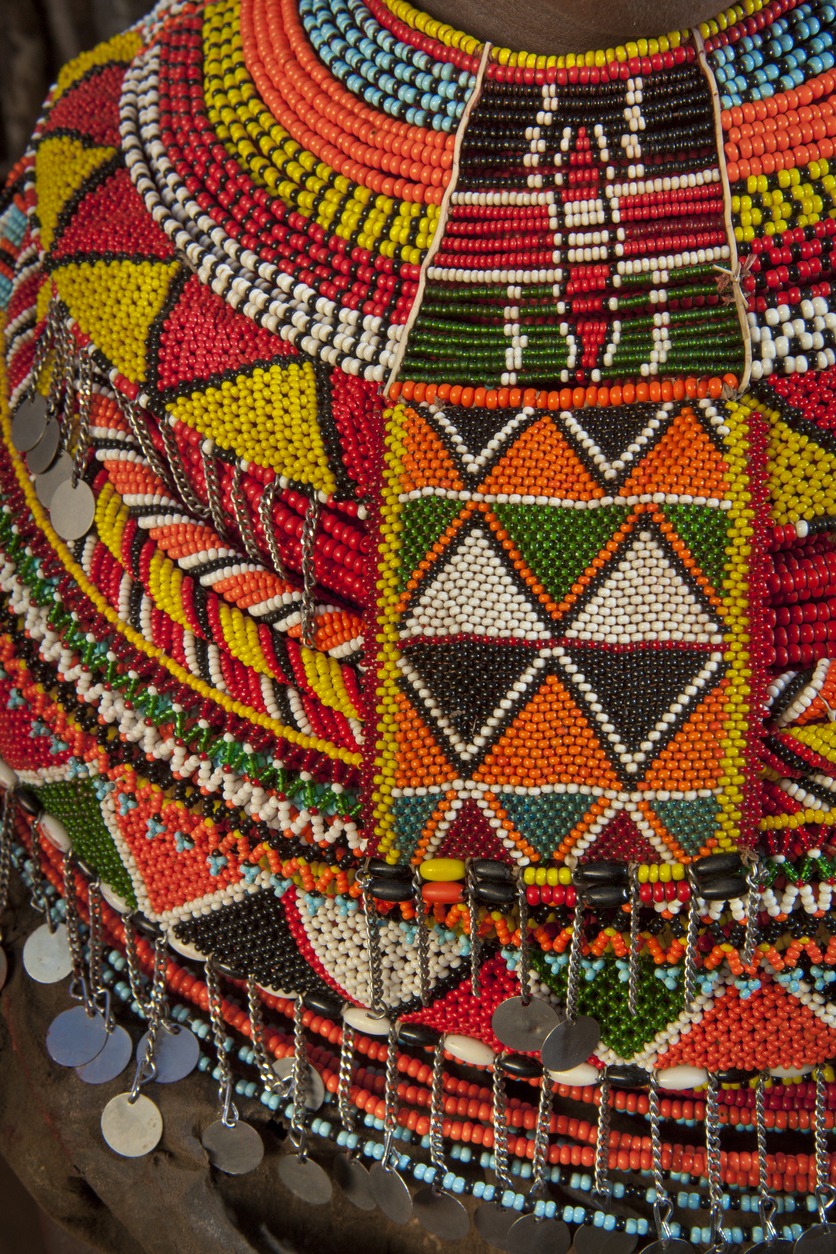Fashion has always shaped cultures since the beginning of time. It’s a creative way to express personality, cultural identity, and status in society.
When it comes to African fashion and beauty, it’s distinct because it is often flamboyant and colorful. It’s not just an aesthetic – it represents a unique heritage that influences fashion trends around the world. It’s a testament to the beauty and diversity of African culture.
Interestingly, African culture is also rich in unusual fashion and beauty trends that may seem peculiar to other cultures but are symbolic and traditional to some African tribes. Let’s explore some of Africa’s unusual fashion and beauty trends:
Neck rings
Hein waschefort, Ndebele women-1, CC BY-SA 3.0
Wearing neck rings seems to be among the most antiquated forms of body modification. Although neck rings are worn for a variety of culturally and individually specific purposes, they’re often used to give the appearance of having a long neck.
In the case of the people of South Ndebele in Africa, they wear neck rings as part of their traditional attire and as a symbol of wealth and prestige. The rings, known as dzilla, are only permitted to be worn by married women. Not only are metal rings worn on the neck, but they are also worn on other regions of the body. These rings are individual and do not serve as a means of bodily alteration; traditionally, a wife receives them from her husband, and they are not taken off until the husband passes away. The rings are often made of brass or copper and are typically layered in multiples of three.
Scarification
Scarification, the practice of intentionally scarring the skin to create raised patterns or designs, takes many forms for many different reasons. One example is Marvel’s Killmonger in Black Panther, where scars on his body signify his assassin’s prowess (Disclaimer: Black Panther alludes to real cultural traditions from a broad mix of African cultures).
In several African tribes, scarification is practiced to convey their tribe, family, cultural identity, marital or social status or as part of rituals. Each tribe has its unique scarification patterns, each holding specific meanings. This generational tradition not only emphasizes beauty but also celebrates individuality, ensuring no two people bear identical markings. Despite societal disapproval, those who embrace scarification consider it a source of pride in self and lineage.
In West Africa, scarification is used to mark significant life milestones such as puberty or marriage. The process involves cutting, carving, or burning symbols into the skin filled with pigments like ash, mud, or ink for a lasting effect.
However, scarification has declined in the 21st century due to concerns about health risks associated with traditional tools. Nowadays, it’s often seen only by elders or pastoralists.
Earlobe Stretching
The Mursi Tribe in Ethiopia is known for its lip and ear stretching practices. Although lip and ear stretching are observed in various cultures worldwide, the Mursi people often attract attention due to the significant size of their piercings. Typically, around the age of fifteen and a year before marriage, a young woman undergoes the piercing process by her mother, using a wooden peg in each piercing. As the healing progresses, the pegs are changed, gradually increasing in diameter (usually 8–22 cm). Upon reaching the desired size, the young woman earns a higher degree of respect within the community compared to those without piercings.
Earlobe stretching is also embraced by Mursi men, serving as an indicator of social status. The size of the ear plate reflects the member’s rank or authority within the tribe. Aside from Africa, ear stretching is also practiced by the Dayak people in Borneo. Learn more about it in our article, Why Do the Dayak Tribes of Borneo Practice Ear Stretching as a Standard of Beauty?
Lip Plates
One of the most stunning cultural practices from the continent involves the use of lip plates or lip discs. This beauty tradition primarily serves as a rite of passage for African women. Mouth plates are found across the continent, including among the Sara women of Chad, the Mursi and Surma tribes from Ethiopia, the Makonde people along the Eastern coastline, and the Lobi tribes from Ghana, who use metal or stone rods known as tembetá.
To achieve this distinctive appearance, a young girl’s lower lip is cut, and a wooden peg is inserted to prevent the incision from closing as it heals. Gradually, they use larger plates over time until they reach the desired size, sometimes exceeding 12 cm (five inches. While many tribes have discontinued this practice, it remains a unique art form that may eventually fade away.
Tribal Paintings and Bold Makeup
Modern, fashionable African women love to don vibrant and bold makeup looks, not just because it suits them but also because it’s part of their heritage. Colorful eyeshadows, dramatic eyeliner, and statement lips – these beauty trends have tribal roots.
Evidence of makeup powders dating back to 164,000 BCE in South Africa suggests a rich history of cosmetics on the continent. Tribal face and body painting practiced globally and across Africa, takes on diverse forms, with each style carrying unique meanings. Beauty, status, and identity are at the heart of this cultural activity.
Cosmetics first emerged in Ancient Egypt around 5,000 years ago. Some depictions of ancient makeup looks include almond-shaped circles drawn around the eyes with kohl, which is a mixture of copper, antimony, lead, ash, and ochre. Egyptians also used malachite, a bright green paste made from copper minerals, and rouge crafted from crushed flowers to add vibrancy to their cheeks and lips.
In Morocco, Berber women draw a kohl line from the base of their bottom lip down to the chin, symbolizing marital status. Makeup in Africa serves both functional and aesthetic purposes, such as enhancing eye appearance and providing protection against the sun and germs.
Meanwhile, tribal painting is introduced to Africans from childhood, with each expression carrying specific meanings and techniques. These face paintings signify religion, traditions, military positions, defense against enemies, or hunting purposes.
Tribal makeup also serves as a clear marker of social and generational distinctions, distinguishing boys from men, men from women, and tribe members from outsiders. Tribal painting celebrates the beauty and identity of the individual, allowing them to proudly embrace their true selves. The paints are typically crafted from clay, with various colors achieved by crushing leaves or flowers.
Afro and Hair Braiding
Hair holds big significance in African culture – it’s regarded as sacred and can tell a lot when it comes to a person’s identity, culture, and character. Some cultures even consider unkempt hair as a sign of insanity!
The Afro, considered symbolic of trees, elevates the wearer to a connection with Mother Nature in the eyes of many African tribes. Protecting one’s hair from strangers or enemies is a common practice, believed to be a means of communication with the gods. Additionally, long and healthy hair is often associated with a woman’s ability to produce strong children.
Braiding, a time-honored tradition, is used to beautify as well as communicate some status, like age, wealth, marital status, or societal rank. The intricate and exuberant braiding styles that characterize much of Africa’s history have influenced global beauty trends, often without due credit.
Some braiding styles take days to complete, fostering companionship among community members and strengthening relationships among females.
Braids are frequently adorned with colorful beads, gold or silver coins, and various accessories. The introduction of colorful synthetic hair extensions has further embraced and celebrated vibrant plaits among Black women, especially in light of the historical policing of our hair and identities by other ethnicities.
Feather Headdress
Across the world, tribal people have always used the plumes of birds they hunted to decorate themselves. Feathers have also been a sign of status and personal quality, even in Western societies.
The African headdress is a sophisticated work of art worn on the head, symbolizing one’s elevated status in society. Individuals in leadership roles, administrators, spiritual leaders, and sometimes the affluent in the community often don these headdresses on special occasions.
Feathers, historically part of human self-adornment, are used to signify status, wealth, vitality, and defiance. For instance, Zulus once adorned turaco feathers in their headdresses, a tradition still followed by the King of Swaziland and traditional Masai men. In West Africa, the inclusion of a porcupine quill and a red flight feather from Bannerman’s Turaco Tauraco bannermani in a man’s black hat signifies his role as a traditional council member.
Gele
Gele is a unique head tie primarily worn by women from Nigeria and West Africa. The practice of wearing gele has roots in Yoruba culture, but its exact origin is hard to pinpoint. Old photographs suggest its existence for more than a century.
Traditionally, the gele symbolized a woman’s marital status, worn to the right for married and to the left for single. It also signifies a woman’s status in society because the larger the gele, the bigger the cost.
Beyond Nigeria, other West African countries, such as Ghana, have embraced the Gele as part of their clothing traditions.
In the 20th century, gele became more popular along with the emergence of the buba, iro, and ipele – three integral components of traditional attire. Today, geles are donned for different occasions like weddings, burials, festivals, state functions, and religious gatherings, each occasion dictating the fabric type and tying style. It’s common for a Nigerian woman to have the perfect gele for every event.
Masai Beaded Jewelry
If you have seen a photo of the Maasai people from Kenya, you have probably noticed the exquisite beaded jewelry that they wear on their necks or wrists. One of the tribe’s most famous handicrafts is colorful beadwork, which is admired by both visitors and designers.
Beaded jewelry is essential to Maasai culture – it’s not just decorative. Jewelry is created and worn to signify important life events, social standing, and age. For instance, when she gets engaged, a woman receives a unique engagement necklace made of two entwined beaded strands. She receives a broad collar necklace from her mother to wear at the ceremony on her wedding day. Even so, both men and women wear jewelry, but women are primarily in charge of making it. For the Maasai people, it’s traditionally considered a social duty for women to learn how to make beaded jewelry.
The colors of the beads are also symbolic for the tribe. The primary colors used in their beadwork include red, yellow, orange, white, blue, green, and black. Here’s what the colors symbolize:
- Red – bravery and unity
- Yellow or orange – hospitality
- White – peace, health and purity
- Green – health and land
- Blue – energy and the sky
- Black – the people and the hardships they face
Beading has become a significant source of income for the Maasai people, who strive to preserve their way of life.
Maasai beadworks have been gaining popularity, and it’s leading to the emergence of unconventional designs in new-age products. But the patterns and aesthetics, which are now reaching audiences across the globe, are replete with Maasai cultural symbolism. In addition to the Maasai beaded jewelry, there are also Gusbi necklaces made in Western Africa. Learn more about these in our article, How Do the Gusbi Necklaces of Western Africa Symbolize Status Through Beadwork?
Henna Body Art
The ancient art of Henna, known as mehndi in Hindi and Urdu, has been a tradition in India, Pakistan, Africa, and the Middle East for over 5000 years. It was initially valued for its natural cooling properties in hot desert climates. With a henna tattoo, a paste was created and applied to the palms of hands and soles of feet. Beyond its cooling benefits, Henna was used medicinally to treat ailments like stomach aches, burns, headaches, and open wounds.
As people discovered that the paste left a temporary stain on the skin due to lawsone (a plant-based, reddish-orange dye that binds to the keratin in the skin), Henna’s use evolved into a decorative practice accessible to people of all socioeconomic levels.
Today, Henna is often applied during weddings and birthdays, adding joy to gatherings. The henna paste symbolizes good health and prosperity in marriage, and in certain cultures, a darker henna stain signifies deeper love between individuals.
Note that henna designs aren’t tattoos; tattoos are permanent, piercing the skin with ink, while Henna is a temporary dye resting on the skin’s surface. Henna can also be used to dye hair, nails, and fabrics like wool, wool, and leather.
Final Thoughts
African fashion and beauty trends offer a rich tapestry of cultural heritage, symbolism, and identity. From the striking neck rings of the Ndebele people to the intricate scarification patterns of various tribes, each tradition tells a unique story of the continent’s diverse cultures. The practice of earlobe stretching, the adornment of lip plates, and the bold, vibrant tribal makeup and paintings all reflect the deep-rooted significance of beauty and fashion in African societies.
The Afro hairstyle and elaborate hair braiding techniques are not just about aesthetics; they are powerful symbols of cultural pride and identity. Feather headdresses, gele head ties, and Maasai beaded jewelry further illustrate the continent’s rich tradition of self-expression and status. Lastly, the ancient art of Henna body painting beautifully showcases the intersection of beauty, tradition, and communal celebration. Find out more about this unique beadwork in our article, What Do the Colors and Patterns in Maasai Beadwork Represent?
These fashion and beauty trends from Africa provide a window into the continent’s soul, revealing stories of heritage, community, and the enduring strength of its people. As the world becomes increasingly globalized, these African traditions continue to influence and enrich global fashion, reminding us of the beauty inherent in diversity and the power of cultural expression.
